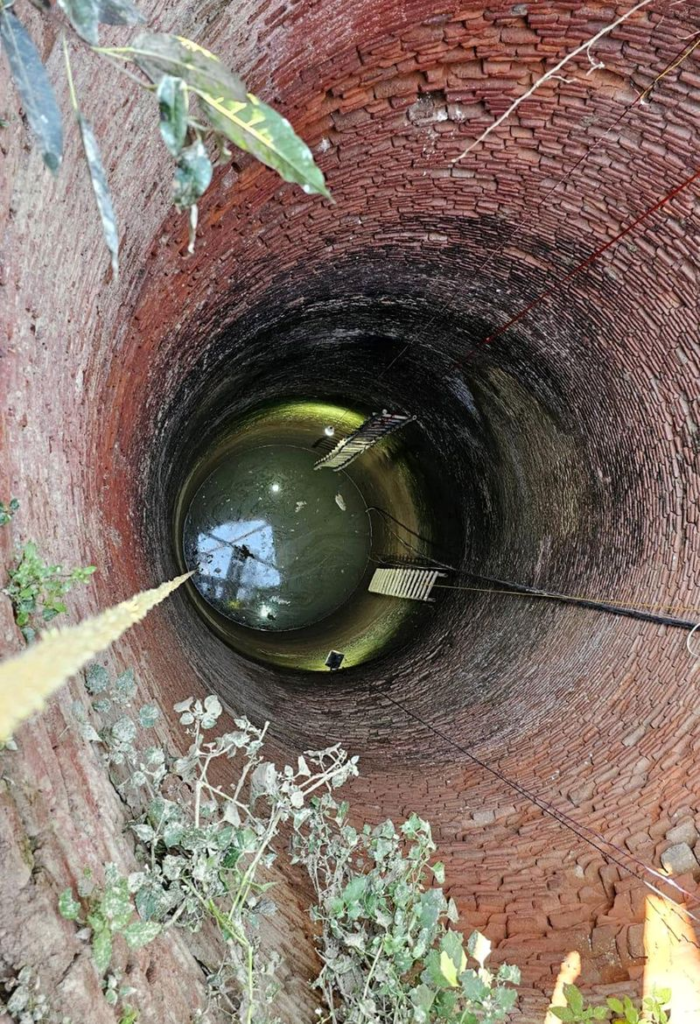At Dhun Dhai Wala, a small village in the border belt of Tarn Taran district, the memory of Naik Lal Singh is cherished. A martyr of the Battle of Saragarhi, one of the best known but scarcely documented war, Naik…
Neha Saini Tribune News Service

At Dhun Dhai Wala, a small village in the border belt of Tarn Taran district, the memory of Naik Lal Singh is cherished. A martyr of the Battle of Saragarhi, one of the best known but scarcely documented war, Naik Singh’s legacy has been preserved in the form of a Saragarhi Memorial at the village that stands as a testament to his sacrifice and that of his comrades.
Annual commemorations are held to honour their legacy, attracting commoners and dignitaries alike. In a recent development, members of the village panchayat, led by sarpanch Jagroop Singh, and locals dug up a well located at the memorial site and made it functional. The villagers, in collaboration with Punjab INTACH Tarn Taran chapter, had moved a proposal to develop the memorial site, including Naik Lal Singh’s family land, into a heritage site.
During a recent visit of INTACH ex-chairman Maj Gen LK Gupta (retd) to Naik Lal Singh’s memorial, he said the historic well, which was in a state of disuse, should be conserved and preserved. Dhun Dhai Wala village panchayat led by sarpanch Jagroop Singh and Surjit Singh from Saragahi Welfare Society, members of panchayat and village women, led by Parkash Kaur, started the process of digging up the well, along with Dr Baljit Kaur, INTACH Tarn Taran convener.
Advertisement
Maj Gen Balwinder Singh, INTACH State Convener, said with the help of the village panchayat and volunteers, manual digging of the well was done. “After 15 feet digging, the water was found. The well is now functional. Earthen buckets that were used to extract water at that time were found while digging, confirming that the well is historic indeed,” said Maj Gen Balwinder Singh.
Born at Dhun Dhai Wala, Lal Singh hailed from a family with a rich martial tradition. The village, located on fertile land, has been a nurturing ground for many bravehearts, who have served the Indian Army.
The land on which the well is situated belonged to Naik Lal Singh. Next to the well is the War Memorial of Naik Lal Singh. “In September every year, a function is held wherein over 2,000 people from nearby villages gather to remember Lal Singh’s sacrifice,” said Dr Baljit Kaur, Tarn Taran INTACH chapter convener.
In September last, recognising the historic significance of the Saragarhi battle and the need to preserve its legacy, the Indian National Trust for Art and Cultural Heritage (INTACH) initiated efforts to maintain and promote the related sites. The third generation of Naik Lal Singh’s family attended the memorial ceremony and pledged the land for heritage use. “Last year, defence personnel from the British and US Army came to pay tribute as history of Saragarhi martyrs is well known in Europe,” added Maj Gen Balwinder Singh.
Battle of Saragarhi
On September 12, 1897, the British Indian Army’s 36th Sikh Regiment (now 4 Sikh) was stationed at the Saragarhi post, a small outpost connecting two major forts — Lockhart and Gulistan — in the North-West Frontier. Naik Lal Singh was at the Saragarhi fort and made a supreme sacrifice, along with, all the 21 soldiers while fighting back more than 10,000 Afghan tribesmen.
Despite being heavily outnumbered, the Sikh soldiers displayed exceptional valour. They repelled multiple assaults, inflicting significant casualties on the attackers. The battle lasted for several hours, during which all 21 defenders, including Lal Singh, were martyred. In recognition of their unparalleled bravery, all 21 Sikh soldiers were posthumously awarded the Indian Order of Merit, the highest gallantry award for Indian soldiers at the time. The honour is considered equivalent to the present day Param Vir Chakra.
